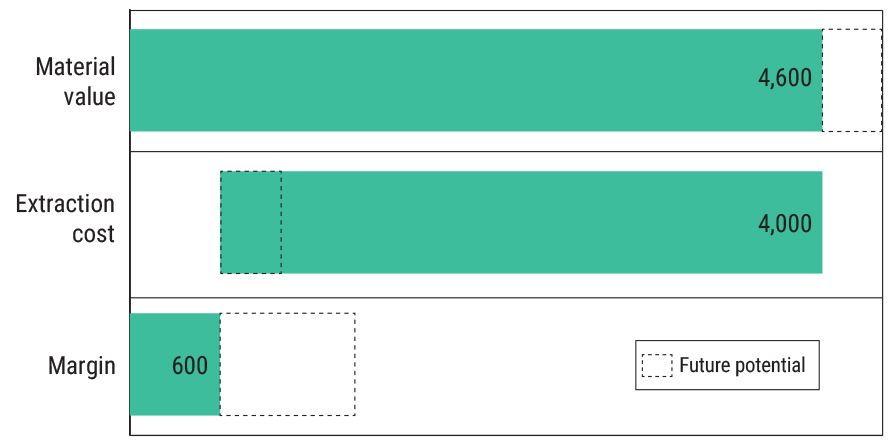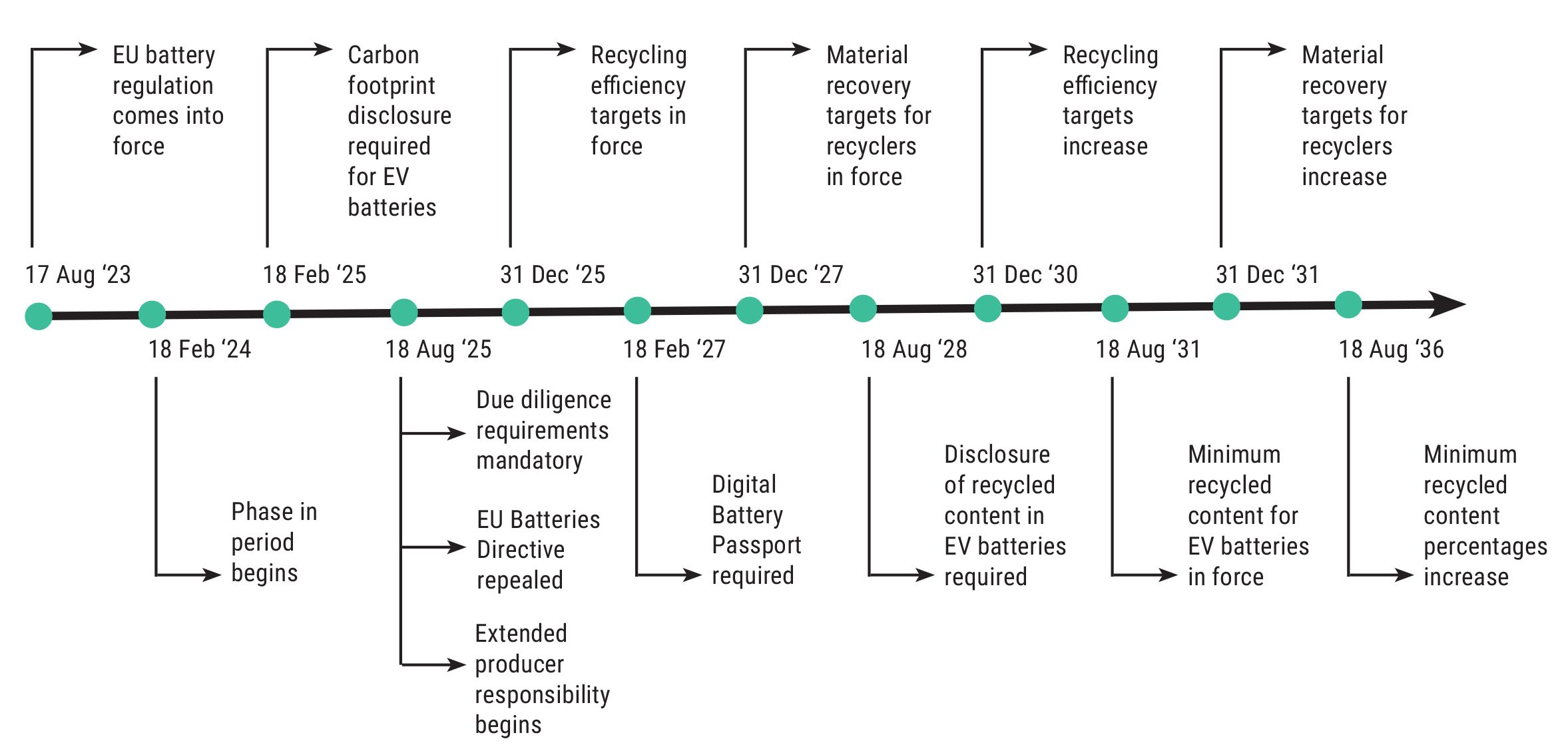The transition to a sustainable energy economy is contingent upon the availability of critical minerals such as lithium, nickel and cobalt, which are essential for battery production. As we aim to reduce our carbon footprint, the role of battery recycling becomes increasingly significant.
Effective battery recycling could contribute the equivalent of 30 new lithium mines to the global supply by 2040, which is essential given that without recycling, an estimated 273 additional mines would be needed to meet projected demand.
Investors should be looking at opportunities in battery recycling due to the inevitable need to develop the industry.
Profitability in sight
Within the global battery recycling sector, encompassing processes from collection through to metal extraction, annual revenues are anticipated to increase to over $95bn by the year 2040.
This growth is mainly attributed to the value of the extracted metals, projected trends in battery cell chemistry and the regional diversification of supply chains. By 2025, the revenue generated per ton of recycled battery material is estimated to nearly reach $600.
The potential for value creation in this industry is expected to align closely with the primary metals sector, which currently stands at approximately 30%, contingent on fluctuations in market prices.
The monetary value generated per ton of battery recycling material could approach $600 by 2025

A supportive economic and regulatory backdrop
One of the reasons for the evolvement of the battery recycling industry is regulatory incentives such as the US Inflation Reduction Act 2022, which provides tax credits for recycled battery materials, and the EU’s End-of-Life Vehicles Directive, mandating automotive Original Equipment Manufactures (OEMs) to reclaim end-of-life batteries.
Key dates for the new EU battery regulation

The EU Battery Regulation, in particular, is set to revolutionise the battery supply chain in Europe. Replacing the older EU Battery Directive, this new regulation introduces stringent requirements for batteries sold within the EU, including mandates on recycled content, carbon footprint disclosure and due diligence for sourcing of raw materials. The regulation will be phased, with increasing requirements set to come into force from 2031 onwards, highlighting the EU’s commitment to environmental sustainability and ethical sourcing practices.
This regulatory framework is particularly significant as it sets clear targets for the recycled content of lithium, nickel and cobalt in batteries, thereby directly influencing the demand for recycled materials. The introduction of a digital battery passport, mandatory by February 2027, is another innovative aspect of the regulation, aimed at enhancing transparency and traceability across the battery lifecycle.
These global initiatives reflect a broader global trend towards sustainable battery solutions, underpinned by the increasing value of recovered metals and the shift towards sustainable battery chemistry. The ever-increasing regulatory environment in the battery recycling industry highlights why it is a long-term sustainable investment opportunity for investors.
Technological advancements shaping the future of recycling
Alongside the regulatory changes, the technological landscape of battery recycling is also evolving rapidly, with advancements aimed at improving the efficiency and effectiveness of recycling processes.
Currently, there are two primary methods dominate the industry: hydrometallurgical and pyrometallurgical processes. Each has its advantages and challenges, but the goal remains consistent—to maximise recovery rates while minimising environmental impact.
Innovative recycling methods, such as direct recycling and hydro-to-cathode active material processes, are under development, potentially revolutionising the industry by enhancing material recovery rates and reducing overall environmental footprint.
Environmental impacts and material recovery
One of the key reasons that battery recycling will have an important role in our future is that it offers a sustainable alternative to traditional mining, significantly reducing the environmental footprint.
Recycled battery materials can slash carbon emissions by approximately four times compared to virgin materials. This shift is crucial as the industry gravitates towards a more sustainable and accountable supply chain model, aligning with global environmental goals and consumer expectations.
With about four times lower emissions than virgin materials, recycled materials reduce the carbon footprint

The global supply chain and material demand
The global demand for critical minerals is escalating and recycling is poised to play a crucial role in meeting this demand. According to the International Energy Agency (IEA), recycling and reuse efforts could substantially reduce the primary supply requirements for selected minerals in the Sustainable Development Scenario between 2030 and 2040.
This not only mitigates the environmental damage caused by mining but also alleviates geopolitical tensions associated with mineral supply chains.
Battery recycling is an indispensable component of the transition to a sustainable energy economy. There is an ever-increasing need for society to invest in battery recycling.
With the impending surge in demand for EVs and other battery-powered technologies, the need for lithium, nickel and cobalt will escalate dramatically.
The concerted efforts in technological innovation, supported by favourable economic and regulatory landscapes, are setting the stage for a significant expansion of the battery recycling industry.
As we edge closer to 2040, the integration of recycling into global supply chains becomes imperative for achieving a sustainable, efficient and resilient battery ecosystem, ensuring a balanced approach between technological advancement and environmental stewardship.








